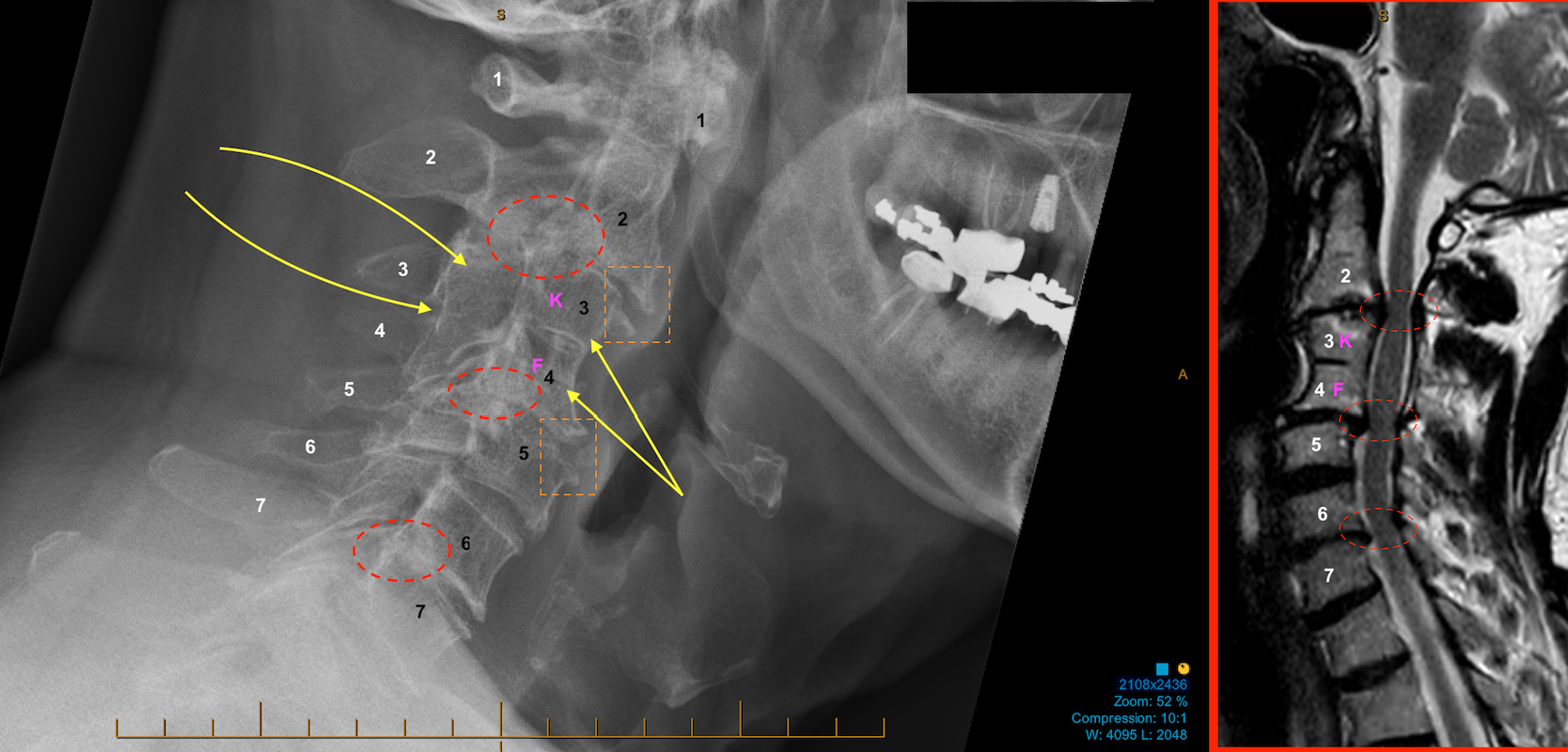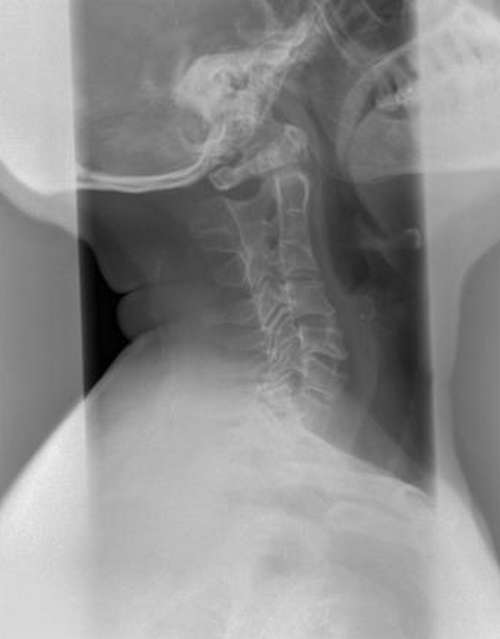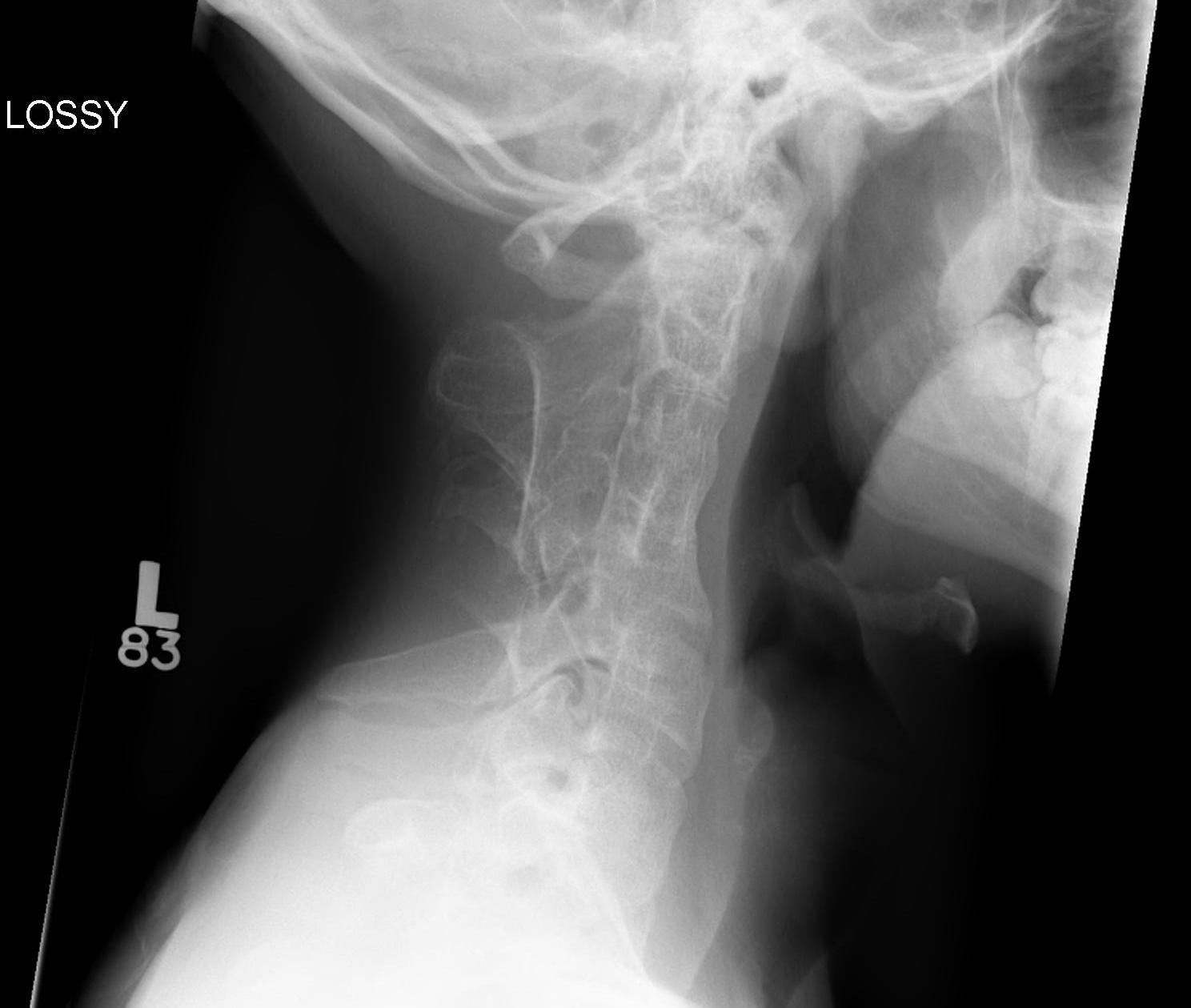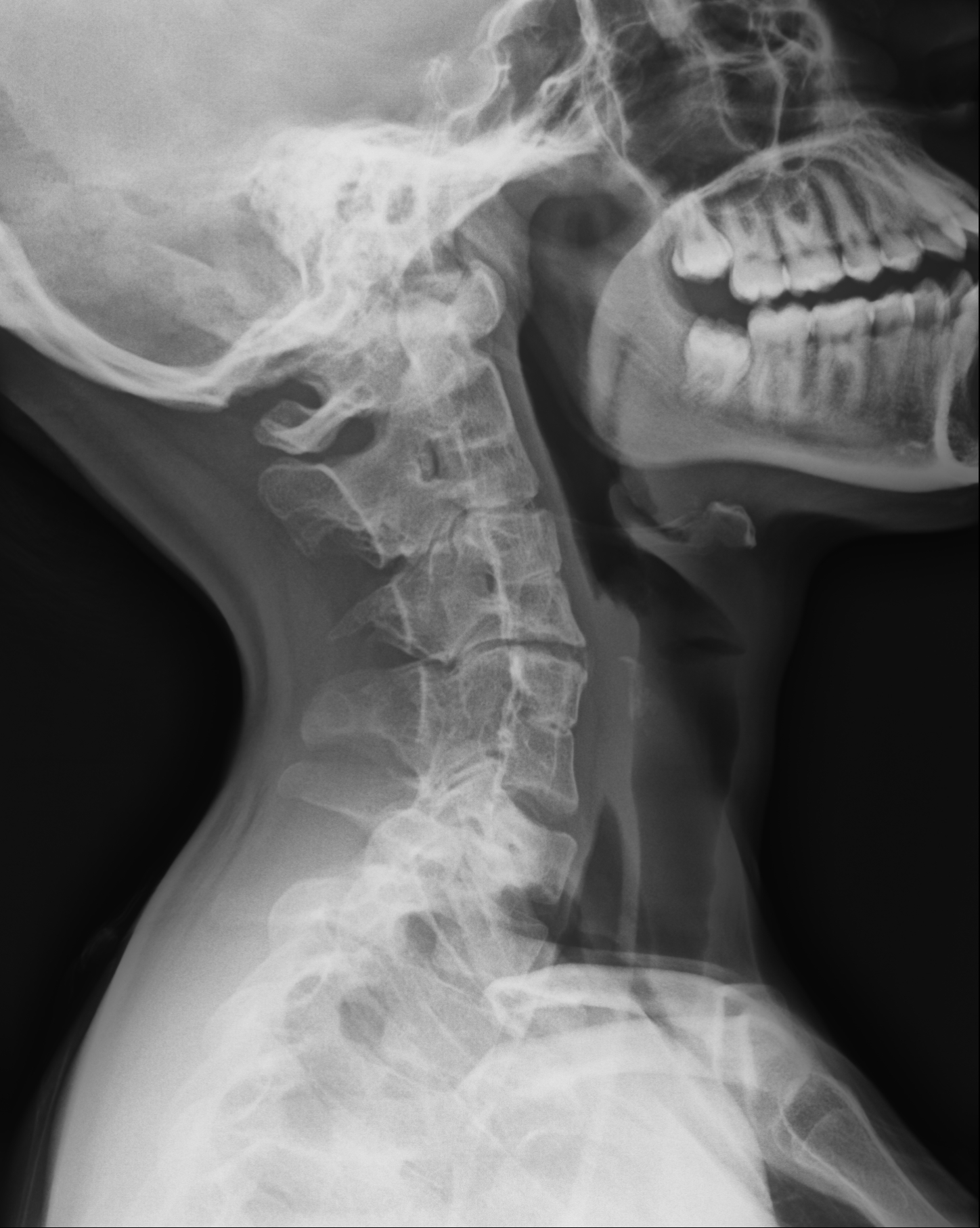
KlippelFeil Syndrome. Congenital fusion. Cervical spinal cord & foraminal in
Klippel-Feil syndrome is a rare disorder where two or more vertebrae in the neck are fused together from birth. People living with Klippel-Feil syndrome may have a short neck limited movement, and pain. The most common symptoms of Klippel-Feil syndrome include: Short neck and the potential for a low hairline at the back of the head.

KlippelFeil Syndrome Pictures Medical Pictures and Images (2023 Updated)
Type 2 patterns may be asymptomatic and reported as incidental findings on X-ray examination. Klippel-Feil syndrome can be associated with fetal alcohol syndrome, congenital malformations in the urogenital system, hearing loss, webbed neck, abducens nerve palsy, cervical ribs and ventricular septal defect.. Klippel-Feil syndrome is a rare.

Lateral cervical Xray of the patient with Type 1 KlippelFeil... Download Scientific Diagram
Klippel-Feil syndrome (KFS) is a rare genetic bone disorder where at least two vertebrae in the neck are fused together from birth. Due to this fusion, patients with KFS have limited neck mobility along with neck and back pain and often chronic headaches. The syndrome was first discovered in 1912 by French physicians Maurice Klippel and Andre Feil.

KlippelFeil syndrome Image
Cleft palate Abnormal reproductive organs or kidneys Heart abnormalities Lung defects and accompanying trouble breathing Discrepancy in the length of your limbs and accompanying trouble with your.

Klippel Feil syndrome Sprengel deformity Image
Klippel-Feil syndrome (KFS) is a condition in which you have two or more neck bones (vertebrae) fused together. KFS causes spine abnormalities and can affect many other body areas. Symptoms include short neck, limited neck mobility and low back-of-head hairline. Treatment depends on severity of your symptoms.

Klippel Feil Syndrome The Bone School
Klippel-Feil syndrome (KFS) is a rare bone disorder. It is characterized by abnormal fusion of the bones of the neck. The cause is largely unknown. However, it has been linked to genetic variations that affect the development of the bones of the neck. Clinical diagnosis is based on three features: Decreased range of motion of the neck

KlippelFeil syndrome Image
Klippel-Feil syndrome is classified into three types 1: type I - many cervical and upper thoracic vertebrae are fused type II - fusion of one or two cervical vertebrae with upper thoracic vertebral fusion type III - cervical vertebral fusion with lower thoracic or lumbar vertebral fusion References 2 articles feature images from this case

Klippel Feil Syndrome Radsource
Klippel-Feil syndrome is defined as fusion of multiple cervical vertebrae. The condition was first reported in 1912 by Drs. Klippel and Feil when they described a patient with a short neck, low posterior hairline and restricted neck range of motion (Hensinger, 1974). These characteristics are considered to be the classic triad in this patient.

KlippelFeil Syndrome with Sprengel Deformity radRounds Radiology Network
Sprengel deformity is the most common congenital shoulder deformity. This causes cosmetic and functional problems. There is an associated restricted motion of the scapula and glenohumeral joint. It is associated with other abnormalities of the vertebrae and ribs. The omovertebral bone (os omovertebrale) is present in about 35% of cases.

KlippelFeil syndrome. Chest radiograph of 39yearold female with... Download Scientific Diagram
Klippel-Feil syndrome (KFS) is a complex condition presenting due to abnormal fusion of cervical vertebrae at C2 and C3, caused by a failure in the division or normal segmentation of the cervical spine vertebrae in the early fetal development.

(PDF) klippel feil syndrome
What is KF syndrome? KF syndrome causes two or more bones in the neck to remain fused instead of separating into distinct bones. It occurs during the early stages of fetal development. Health.

Klippel Feil Syndrome Radsource
Klippel-Feil syndrome is a complex heterogeneous entity that results in cervical vertebral fusion. Two or more non-segmented cervical vertebrae are usually sufficient for diagnosis. Epidemiology There is a recognized female predilection 1. Klippel-Feil syndrome has an incidence of 1:40,000-42,000 2. Associations Sprengel deformity of the shoulder

Xray neck revealing KlippelFeil anomaly. Download Scientific Diagram
Klippel-Feil syndrome is a bone disorder characterized by the abnormal joining ( fusion ) of two or more spinal bones in the neck (cervical vertebrae). Explore symptoms, inheritance, genetics of this condition.

Klippel Feil Syndrome Radsource
Klippel-Feil syndrome ( KFS ), also known as cervical vertebral fusion syndrome, is a rare congenital condition characterized by the abnormal fusion of any two of the seven bones in the neck ( cervical vertebrae ). [1] : 578 It results in a limited ability to move the neck and shortness of the neck, resulting in the appearance of a low hairline.

Case 2. Left, Woman with KlippelFeil syndrome. Right, Xray view Download Scientific Diagram
Klippel-Feil syndrome is a rare bone disorder distinguished by the abnormal fusion of two or more bones in the neck. Children with the disorder may have a short, webbed neck, decreased range of motion in the head and neck area, and/or a low hairline at the back of the head.

Case 2. 7yearold girl with KlippelFeil syndrome and left Sprengel... Download Scientific
Klippel-Feil syndrome is a complex disorder that consists of congenital fusions of the cervical vertebrae. It occurs in one of every 42,000 births, and 60% of cases are female. This syndrome results from failure of the normal segmentation of the cervical somites during the 3 rd to 8 th weeks of gestation. Classically there is a triad of short.